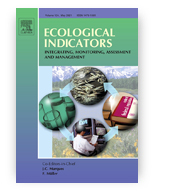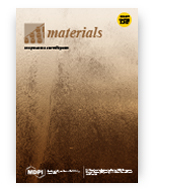Ecological state evaluation of lake ecosystems revisited: Latent variables with kSVM algorithm approach for assessment automatization and data comprehension
Grzegorz Chrobak, Tomasz Kowalczyk, Thomas B. Fischer, Szymon Szewrański, Katarzyna Chrobak, Jan Kazak
Ecological Indicators
 Automated and reproducible methodology for assessing the ecological condition of lakes is essential for effective monitoring and facilitating the decision-making process aimed at achieving the stated environmental goals. At the same time, multidimensional measurement datasets are often an obstacle to drawing insightful conclusions, thus becoming an incentive for overly simplified analyzes. In this article, a set of measurements and ecological status assessment results for a collection of 499 lakes in Poland was used. Expert assessment process was recreated using the supervised kernel Support Vector Machine algorithm on dataset with reduced dimensionality, thus a model that automates the ecological assessment process was obtained. The use of the explanatory skill of latent variables made it possible to present the assessed objects along with their position in individual classes. The visualization of the results in reduced dimensionality increased, without interfering with the size of the classes, the informative evaluation potential, which should be considered as an acompanying assessment parameter in the future. The primary target of this paper is the ecological expert coping with automatization of assessment process and obtaining latent information for sense-making visual comprehension during consultations regarding ecosystem-oriented ecological decision making.
Automated and reproducible methodology for assessing the ecological condition of lakes is essential for effective monitoring and facilitating the decision-making process aimed at achieving the stated environmental goals. At the same time, multidimensional measurement datasets are often an obstacle to drawing insightful conclusions, thus becoming an incentive for overly simplified analyzes. In this article, a set of measurements and ecological status assessment results for a collection of 499 lakes in Poland was used. Expert assessment process was recreated using the supervised kernel Support Vector Machine algorithm on dataset with reduced dimensionality, thus a model that automates the ecological assessment process was obtained. The use of the explanatory skill of latent variables made it possible to present the assessed objects along with their position in individual classes. The visualization of the results in reduced dimensionality increased, without interfering with the size of the classes, the informative evaluation potential, which should be considered as an acompanying assessment parameter in the future. The primary target of this paper is the ecological expert coping with automatization of assessment process and obtaining latent information for sense-making visual comprehension during consultations regarding ecosystem-oriented ecological decision making.
10.1016/j.ecolind.2021.107567
Lab-Scale Study of Temperature and Duration Effects on Carbonized Solid Fuels Properties Produced from Municipal Solid Waste Components
Kacper Świechowski, Paweł Stępień, Ewa Syguła, Jacek A. Koziel, Andrzej Białowiec
Materials
 In work, data from carbonization of the eight main municipal solid waste components (carton, fabric, kitchen waste, paper, plastic, rubber, paper/aluminum/polyethylene (PAP/AL/PE) composite packaging pack, wood) carbonized at 300–500 °C for 20–60 min were used to build regression models to predict the biochar properties (proximate and ultimate analysis) for particular components. These models were then combined in general models that predict the properties of char made from mixed waste components depending on pyrolysis temperature, residence time, and share of municipal solid waste components. Next, the general models were compared with experimental data (two mixtures made from the above-mentioned components carbonized at the same conditions). The comparison showed that most of the proposed general models had a determination coefficient (R2) over 0.6, and the best prediction was found for the prediction of biochar mass yield (R2 = 0.9). All models were implemented into a spreadsheet to provide a simple tool to determine the potential of carbonization of municipal solid waste/refuse solid fuel based on a local mix of major components.
In work, data from carbonization of the eight main municipal solid waste components (carton, fabric, kitchen waste, paper, plastic, rubber, paper/aluminum/polyethylene (PAP/AL/PE) composite packaging pack, wood) carbonized at 300–500 °C for 20–60 min were used to build regression models to predict the biochar properties (proximate and ultimate analysis) for particular components. These models were then combined in general models that predict the properties of char made from mixed waste components depending on pyrolysis temperature, residence time, and share of municipal solid waste components. Next, the general models were compared with experimental data (two mixtures made from the above-mentioned components carbonized at the same conditions). The comparison showed that most of the proposed general models had a determination coefficient (R2) over 0.6, and the best prediction was found for the prediction of biochar mass yield (R2 = 0.9). All models were implemented into a spreadsheet to provide a simple tool to determine the potential of carbonization of municipal solid waste/refuse solid fuel based on a local mix of major components.
10.3390/ma14051191









